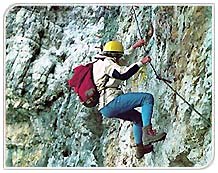Ladakh Travel Guide
---------------------------------------------------------------------------------------------------------------------------------------------------------------------------------------------------------------------------------
Ladakh Home » About Ladakh Travel Guide » Religion & Culture » Historical Background » Ancient Routes » Modern Routes
Central Ladakh » Fairs & Festivals » Oracles & Astrologers » Arts & Crafts » Cultural Tourism » Archery & Polo » Adventure in Ladakh
The New Areas » Tourist Information » Air Line Ticketing » Car Coach Rentals In Ladakh
Travel Agents & Tour Operators in Ladakh » Hotels & Resorts in Ladakh » Map »Travellers Tools
---------------------------------------------------------------------------------------------------------------------------------------------------------------------------------------------------------------------------------
Ladakh Home » About Ladakh Travel Guide » Religion & Culture » Historical Background » Ancient Routes » Modern Routes
Central Ladakh » Fairs & Festivals » Oracles & Astrologers » Arts & Crafts » Cultural Tourism » Archery & Polo » Adventure in Ladakh
The New Areas » Tourist Information » Air Line Ticketing » Car Coach Rentals In Ladakh
Travel Agents & Tour Operators in Ladakh » Hotels & Resorts in Ladakh » Map »Travellers Tools
---------------------------------------------------------------------------------------------------------------------------------------------------------------------------------------------------------------------------------
Adventure in Ladakh
Mountain Climbing in Ladakh
 The
area most frequented by foreign climbers is the Nun-Kun Massif in the Great
Himalayan Range. Its easy accessiblity from the Kargil-Pudum road and the
shortest possible approach march to the base camps makes this massif the most
attractive climbing destination in the Great Himalaya, necessitating advance
booking years ahead. Among its six known peaks accessible from the Suru Valley,
Nun (7,135m) and Kun (7,077m ) are the highest summits.
The
area most frequented by foreign climbers is the Nun-Kun Massif in the Great
Himalayan Range. Its easy accessiblity from the Kargil-Pudum road and the
shortest possible approach march to the base camps makes this massif the most
attractive climbing destination in the Great Himalaya, necessitating advance
booking years ahead. Among its six known peaks accessible from the Suru Valley,
Nun (7,135m) and Kun (7,077m ) are the highest summits. The area nearest to Leh is Stok-khangri Massif in the Zanskar mountains, south of Leh. The base camp for the various peaks of this massif is about two days trek from the village of Stok. Among its known peaks, Stok-khangri (6,150 m) is the highes ; it offers a spectacular perspective to the central expanse of the Indus valley which it dominates. Other peaks in the area include Gulap Khangri (5,900 m), Matho West (5,950m) and Kantak (5,275 m). The much higher Konglacha peak (6,700m) lies south-west of Leh and is reached via Rubak on the first leg of the Markha Valley trek from Stok. Many un-named peaks in the altitude range of 5,500 metres and 6,400 metres are also available for climbing in the same region. This entire area falls well outside the Inner Line, or restricted area.
North of Leh, across the Ladakh Range and the Nubra Valley, lies the Karokoram range. It soars to a number of known peaks which are, however, within the restricted area and so not freely accessible to foreign climbers except with special permission from the Government of India. The most prominent summits in this range which are accessible from various parts of the Nubra Vally include, Saser-I (7,415 m), Saser -II (7,513m ) and Saser III (7,495 m).
The climbing season extends from mid - May to mid -October, the ideal period being from June to September because during this time only Ladakh remains unaffected by the monsoon which holds sway over most of the Himalaya. Foreign climbing expeditions are required to obtain permission from the Indian Mountaineering Foundation for climbing all listed peaks. A booking fee, based on the height and popularity of the allotted peak, is charged and a Liasion Officer is assigned to every climbing team. The minimum period required for processing applications is six months. Every authorized expedition is provided with adequate rescue coverage in the events of accidents and illness.
Ladakh Home »
About Ladakh Travel
Guide » Religion
& Culture » Historical
Background » Ancient
Routes » Modern
Routes
Central Ladakh » Fairs & Festivals » Oracles & Astrologers » Arts & Crafts » Cultural Tourism » Archery & Polo » Adventure in Ladakh
The New Areas » Tourist Information » Air Line Ticketing » Car Coach Rentals In Ladakh
Travel Agents & Tour Operators in Ladakh » Hotels & Resorts in Ladakh » Map »Travellers Tools
Central Ladakh » Fairs & Festivals » Oracles & Astrologers » Arts & Crafts » Cultural Tourism » Archery & Polo » Adventure in Ladakh
The New Areas » Tourist Information » Air Line Ticketing » Car Coach Rentals In Ladakh
Travel Agents & Tour Operators in Ladakh » Hotels & Resorts in Ladakh » Map »Travellers Tools